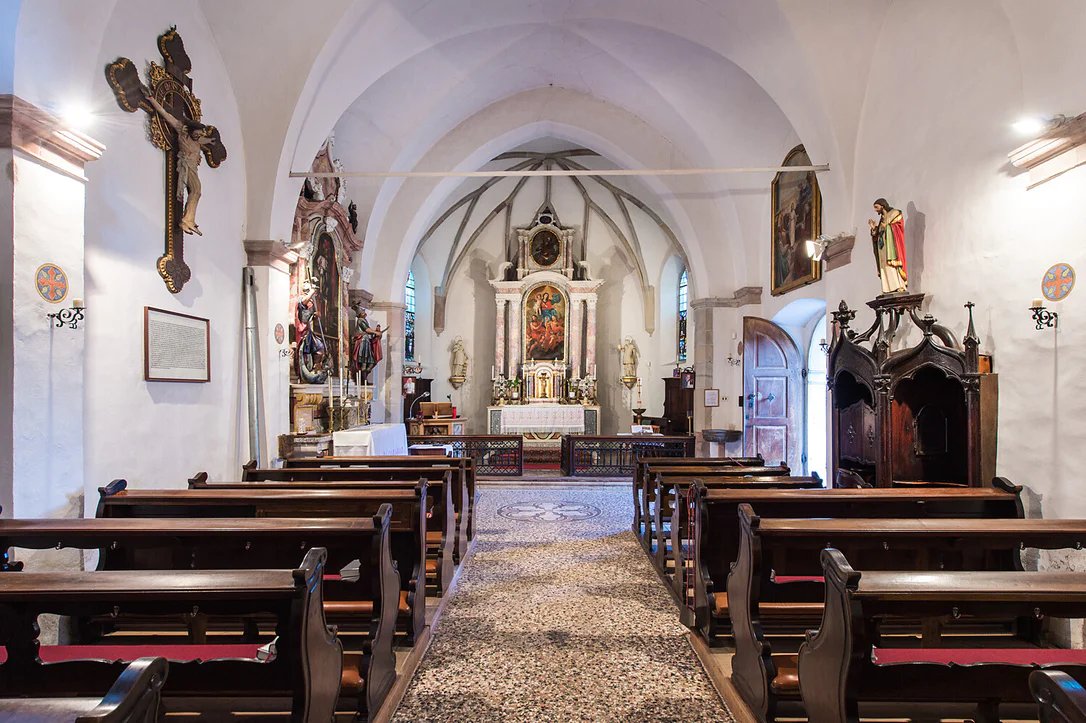Patronal feast: June 24th The construction dates are written on the church itself. The year 1581 can be seen at the end of the choir, 1586 at the southern entrance. The choir of the church was built in Gothic-renaissance mixed forms. The high altar contains an altarpiece of the painter Johann Degler of Funes.
The church is only accessible during holy masses.
Source: Parrish office Kaltern












































































